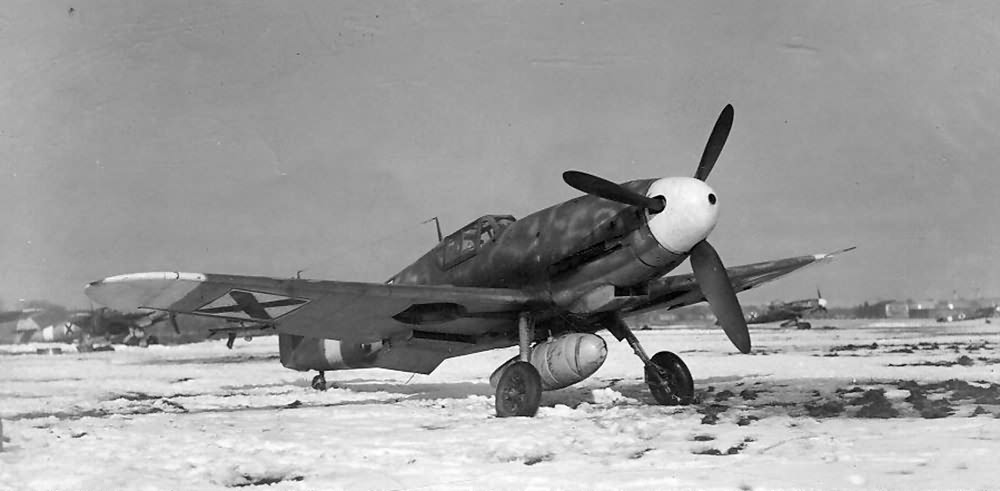The Bf 109G-4 entered service with German fighter units in November 1942, following in the footsteps of its predecessor, the G-2. Like its earlier variant, the G-4 was deployed across all combat theaters. Several visual distinctions set the G-4 apart from the G-2. Due to the aircraft’s increasing weight, the G-4 was equipped with larger main and tail wheels. To accommodate these larger wheels, distinctive bulges were added to the upper wings, a hallmark of later G models. Unlike its predecessor, the larger tail wheel could not be retracted. Additionally, the G-4 featured an upgraded VHF radio, the FuG 16Z, replacing the older FuG VIIa. The G-4/trop variant, commonly encountered by Allied forces in North Africa, Sicily, and Italy, incorporated the same modifications as the G-2/trop. Both G-2 and G-4 models could be equipped with various auxiliary armament and equipment. German fighter units operating in the Mediterranean during late 1942 and early 1943 employed both the G-2 and G-4 until the more advanced G-6 began arriving in the spring and summer of 1943.
Bulgarian Bf 109G-4
Published at 1000 × 491 px.
Link to full-size photo:
Bulgarian Bf 109G-4
Site statistics:
Photos of World War II: over 26800
aircraft: 63 models
tanks: 59 models
vehicles: 59 models
guns: 3 models
units: 2
ships: 47
WW2 battlefields - 12
weapon models: -
equipment: -
